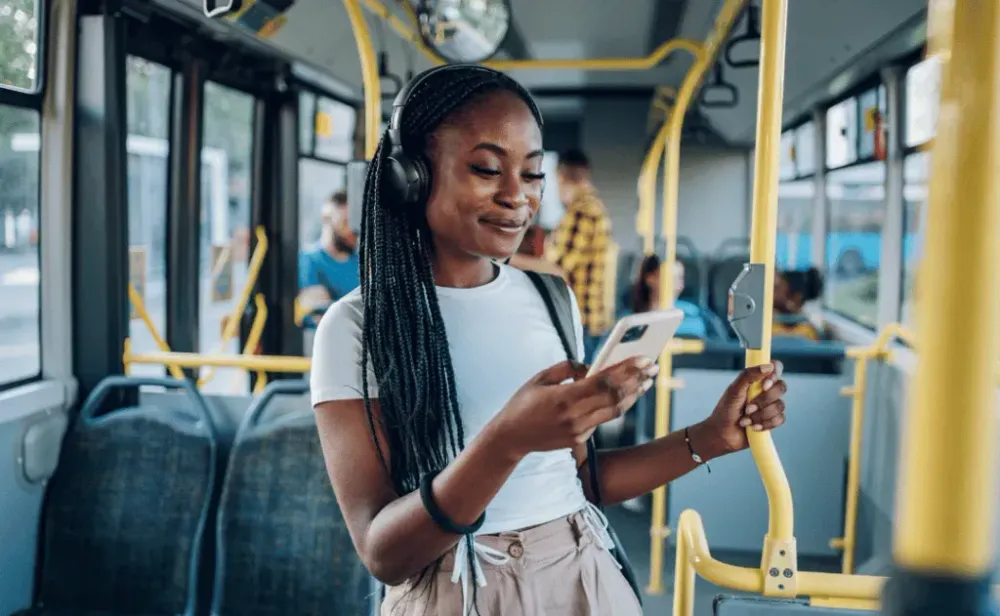You know, everyone talks about how great public transport is. Saves you cash, good for the environment, all that stuff. And yeah, most of the time, it’s pretty decent. But let me tell you, sometimes it feels like you’re just taking a gamble. It’s like these systems are all mapped out, routes and schedules, but the actual experience, the part where things can go wrong for a real person? Feels like they didn’t think that through all the way. Or they just expect everyone to be a pro commuter from the get-go.

I wasn’t always so clued up, not by a long shot. I used to be that person, headphones on full blast, completely lost in my own world. Just get on, tap my card, get off. Simple, right? What could possibly happen? Well, that changed for me. There was this one evening, I was heading home, pretty late, later than usual. My usual bus just… didn’t show up. Then the next one. Turns out, the route was diverted. No signs, no announcements on the app I was using, nothing. Just me and a few other confused souls standing at a dark bus stop in a part of town I didn’t know too well. That feeling of being stranded, a bit vulnerable, it really stuck with me. My phone was dying too, which just added to the fun. That was my wake-up call, that night. I realized I couldn’t just float through my commute anymore.
So, after that charming little experience, I decided I needed to get a bit smarter about using buses and trains. It’s not about being scared all the time, not at all. It’s just about being aware, using your head. You wouldn’t just wander down a dark, unfamiliar street at night without a second thought, would you? So why would you treat a packed train or a late-night bus any differently? It’s all about taking a few simple steps, really.
My Approach Now: How I Handle Public Transport
Okay, so this is what I started doing. These aren’t some secret agent tactics, just common sense things I figured out, mostly after learning the hard way, like that night.
- I actually plan my journey now. Sounds obvious, but I mean really plan it. Before I even think about leaving the house, I’m checking the route. Not just one, but maybe a backup if the first one goes sideways. I look at the times, especially the last service. If it’s a new place, I’ll even peek at it on a map online, see what the stops look like. Is it well-lit? Is there a shop nearby? Small things, but they add up.
- Paying attention is key. This was a big change for me. Headphones? One ear out, or volume way down. I actually look around now. I see who’s getting on, who’s getting off. Not staring, just being observant. If a situation or a person feels a bit off, I’m clocked in and ready to move if I need to. I used to have my nose buried in my phone, but that just makes you an easy target, doesn’t it?
- My phone is always charged. Always. That little brick is your lifeline. Low battery before a trip? Not happening. I bought a decent power bank, and it lives in my bag. If I get lost, if there’s an emergency, if I need to call someone or check an alternative route, I need that phone working. I remember one time my phone died just as I realized I was on the wrong train, heading miles in the wrong direction. The panic was real.
- Trusting that gut feeling. This is a massive one. If a train carriage feels weird, or if someone’s behavior is making me uneasy, I move. I don’t hesitate. I don’t care if it looks a bit awkward or if I have to stand. I’d rather deal with a moment of awkwardness than regret not moving later. I once got off a bus a couple of stops early because a group got on that just gave me a really bad vibe. Meant a longer walk, but my peace of mind was worth it.
- Knowing where the emergency stuff is. Like the emergency brake, the door release, or the help points on the platform. When I get on a train or a tram, I just take a quick mental note of where these things are. Chances are I’ll never need them, but knowing is better than not knowing.
- Avoiding the very last service if possible. Look, sometimes you have to get that last train or bus. But if I have a choice, and an earlier one works, I’m taking it. Fewer people usually means a calmer journey, and if something does go wrong, like a cancellation, you’ve got more time and potentially more options to sort it out.
- A quick “heads-up” text. If I’m traveling late, or going somewhere unfamiliar on my own, I’ll often just send a quick text to my partner or a friend. “On the X38 bus, should be at City Center around 10:15.” Just a simple thing, but it means someone knows where I am and when I’m expected.
Look, at the end of the day, it’s not about living in fear or being paranoid every time you step on a bus. Public transport is super useful, and I use it all the time. But it’s about being proactive. You’ve got to take a bit of responsibility for your own safety out there. Nobody else is going to be looking out for you as well as you can look out for yourself. Stay sharp, stay aware, and usually, you’ll be just fine.








